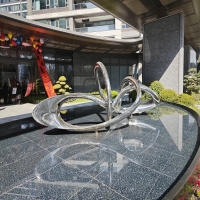Welcome to the website for landscape facilities products and knowledge.
How does WPC handle exposure to soil actinomycete inoculants?
Wood-Plastic Composites (WPC) are widely used in outdoor applications due to their durability and resistance to environmental factors. However, exposure to soil actinomycete inoculants can pose challenges. These microorganisms, known for breaking down organic matter, may attempt to degrade the wood fibers within WPC.
To address this, WPC manufacturers incorporate additives such as biocides and UV stabilizers during production. These additives create a hostile environment for actinomycetes, preventing colonization and degradation. Additionally, the plastic matrix in WPC acts as a barrier, limiting moisture absorption—a key factor for microbial growth.
Research shows that WPC formulations with high-density polyethylene (HDPE) or polypropylene (PP) exhibit superior resistance to actinomycete activity. Surface treatments, such as coatings or laminates, further enhance protection. Regular maintenance, like cleaning and sealing, also prolongs WPC’s lifespan in soil-rich environments.
By combining material science and proactive care, WPC effectively withstands exposure to soil actinomycete inoculants, ensuring long-term performance in demanding applications.
Related search:

Recommendation
Abstract art sculpture, stainless steel metal sculpture, large-scale water feature sculpture